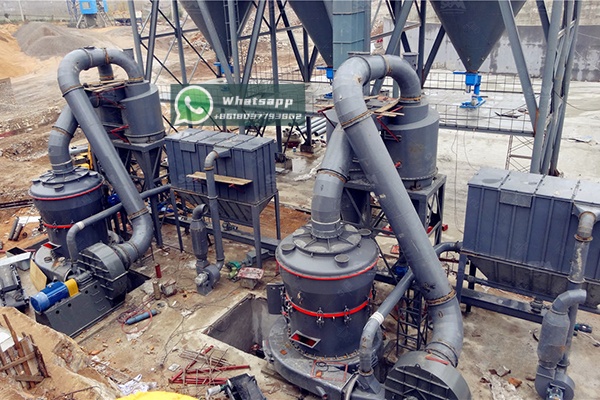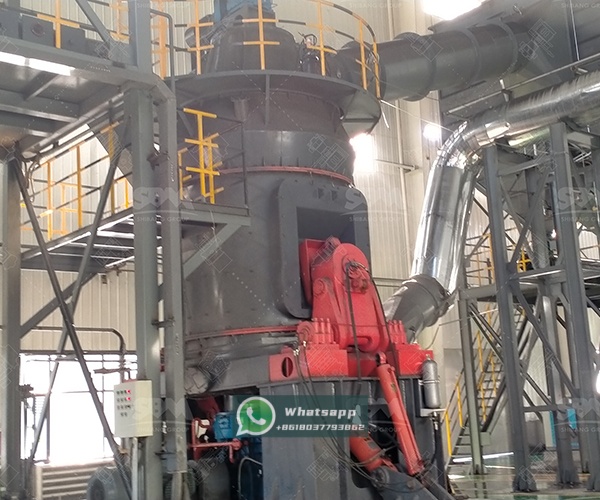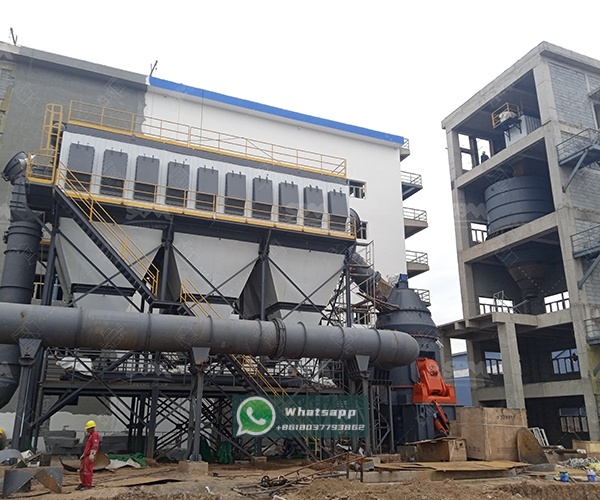The production of white cement presents unique challenges that demand specialized grinding equipment and processes. Unlike ordinary gray cement, white cement requires exceptional purity, precise particle size distribution, and superior whiteness characteristics. The raw meal preparation stage is particularly critical, as it directly impacts the final product quality, energy consumption, and production efficiency. Among various grinding technologies available, vertical roller mills have emerged as the preferred solution for modern white cement plants seeking to optimize their operations.
White cement manufacturing imposes stringent requirements that distinguish it from conventional cement production. The raw materials must contain minimal iron oxide and manganese oxide—typically less than 0.5% and 0.02% respectively—to achieve the desired whiteness. This purity requirement extends to the grinding process, where contamination from grinding media must be strictly controlled. Additionally, the particle size distribution of the raw meal must be carefully controlled to ensure proper burnability and the development of optimal clinker microstructure during calcination.

Traditional ball mills, while capable of producing fine raw meal, often introduce iron contamination through media wear and consume significantly more energy. The vertical roller mill addresses these limitations through its unique grinding mechanism and material handling system, making it particularly suitable for white cement applications.
Vertical roller mills offer several distinct advantages that make them ideal for white cement raw meal grinding. Their dry grinding process eliminates water consumption and subsequent drying requirements, reducing both operational costs and environmental impact. The compact design and integrated drying capability allow for significant space savings compared to traditional ball mill systems.
One of the most critical advantages for white cement production is the minimal metal-to-metal contact in the grinding zone, which substantially reduces iron contamination. The grinding elements typically feature specialized wear protection materials that further minimize contamination risks. Additionally, vertical mills offer superior particle size distribution control, which is essential for achieving optimal burnability in white cement clinker production.
Energy efficiency represents another major benefit. Vertical mills typically consume 30-50% less energy than ball mills for the same grinding duty, thanks to their more efficient grinding principle and integrated drying capability. This efficiency translates to lower operating costs and reduced carbon footprint, aligning with modern sustainability goals.
Shanghai Zenith Machinery Co., Ltd., as an excellent manufacturer of ore grinding equipment in China, has developed the LM Vertical Grinding Mill specifically to meet the demanding requirements of modern cement production, including white cement applications. This mill integrates five functions—crushing, grinding, powder selection, drying, and material conveying—into a single compact unit, providing exceptional operational efficiency and product quality.

The LM Vertical Grinding Mill features several design innovations that make it particularly suitable for white cement raw meal preparation. The grinding roller and grinding table are designed with special wear-resistant materials that minimize iron contamination while maintaining long service life. The mill’s intelligent control system ensures consistent product quality through precise adjustment of operational parameters, while the efficient separator provides excellent particle size distribution control.
For white cement producers seeking to optimize their raw meal preparation, we recommend the LM190K model, which offers the ideal balance of capacity, efficiency, and product quality for medium to large-scale white cement production facilities.
| Model | Plate diameter (mm) | Capacity (t/h) | Output fineness (μm) | Max feed size (mm) | Main motor (kW) |
|---|---|---|---|---|---|
| LM130K | 1300 | 10-28 | 170-40 | <38 | 200 |
| LM190K | 1900 | 23-68 | 170-40 | <45 | 500 |
| LM280K | 2800 | 50-170 | 170-45 | <50 | 1250 |
For white cement producers requiring even finer raw meal or dealing with particularly challenging raw materials, Zenith offers the LUM Ultrafine Vertical Mill. This advanced grinding system represents the cutting edge of vertical mill technology, incorporating intelligent control systems, enhanced classification efficiency, and superior product quality control.
The LUM series integrates grinding, drying, classifying, and transportation functions while occupying minimal space. It is specifically designed to produce products with high content of end-fines and features advanced control systems for easier maintenance and optimized operation. The mill’s unique grinding mechanism and separator design ensure minimal contamination—a critical requirement for white cement production.
For specialized white cement applications requiring ultrafine raw meal with precise particle size distribution, we recommend the LUM1632 model, which offers excellent performance characteristics for demanding production requirements.
| Model | Main machine power (kW) | Capacity (t/h) | Size distribution D97 (μm) |
|---|---|---|---|
| LUM1525 | 220-250 | 1.6-11.5 | 5-30 |
| LUM1632 | 280-315 | 2.0-13.5 | 5-30 |
| LUM1836 | 355-400 | 2.3-15 | 5-30 |
Successful implementation of vertical mill technology in white cement production requires careful consideration of several operational factors. Material characteristics, particularly the abrasiveness and grindability of the raw materials, significantly influence mill performance and wear rates. White cement raw materials typically include high-purity limestone, kaolin, and silica sand, each with distinct grinding properties.
The moisture content of feed materials must be properly managed, though vertical mills offer superior drying capabilities compared to alternative grinding systems. Operational parameters such as grinding pressure, classifier speed, and gas flow must be optimized for each specific raw material combination to achieve the desired product quality while maximizing energy efficiency.
Maintenance planning is another critical aspect. While vertical mills generally require less maintenance than ball mills, proper planning of wear part replacement and systematic inspection routines ensure uninterrupted operation and consistent product quality. Zenith’s vertical mills are designed with maintenance accessibility in mind, reducing downtime and associated costs.

The adoption of vertical mill technology for white cement raw meal grinding delivers substantial economic and environmental benefits. The significant reduction in specific energy consumption—typically 30-50% lower than ball mill systems—translates to direct cost savings and reduced carbon emissions. The compact footprint of vertical mills reduces construction costs and allows for more flexible plant layout options.
From an environmental perspective, vertical mills offer multiple advantages. Their dry process operation eliminates water consumption, while the reduced energy requirement directly lowers greenhouse gas emissions. The minimal noise generation and dust emissions, when properly equipped with modern dedusting systems, contribute to improved working conditions and reduced environmental impact.
The superior product quality consistency achieved with vertical mills also contributes to economic benefits through reduced variation in kiln operation and improved clinker quality. This operational stability allows white cement producers to optimize their overall process efficiency and product quality.
Vertical roller mills represent the modern standard for white cement raw meal grinding, offering superior efficiency, product quality, and operational flexibility compared to traditional grinding systems. Shanghai Zenith Machinery’s LM Vertical Grinding Mill and LUM Ultrafine Vertical Mill provide white cement producers with advanced technological solutions that address the specific challenges of white cement production, including purity requirements, particle size control, and energy efficiency.
With their integrated functionality, compact design, and advanced control systems, these mills enable white cement producers to achieve optimal raw meal quality while minimizing operational costs and environmental impact. As the white cement industry continues to evolve toward higher quality standards and greater sustainability, vertical mill technology will play an increasingly important role in helping producers meet these challenges effectively.